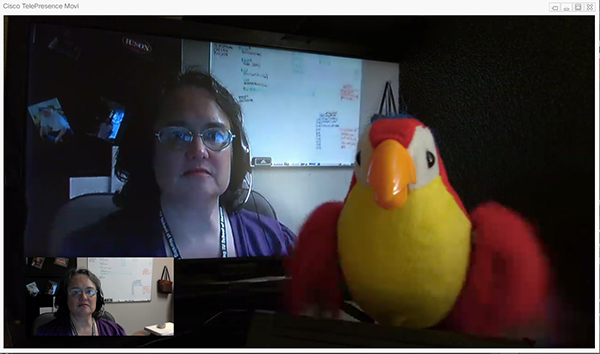Video Conferencing
Video conferencing—and its near cousin, web conferencing—allows two-way voice and video connections so that learners and instructors can see and hear one another during interactions.
- Video conferencing uses computer networks, cameras, and microphones for two or more people to hold synchronous discussion. They can see and hear one another during the conversation. Many systems now use software installed on users’ computers rather than requiring participants to be in specially-equipped rooms.
- Web conferencing is similar to video conferencing. Rather than require computer networks to transmit and installation of specialized hardware, transmissions occur using the installed browser on each participant's computer.
Copybird

IU's Copybird allows individuals to test their video conference connection, camera, and audio. In this example image the user, shown in the lower left corner inset, used her video conferencing software to dial Copybird. After the connection was established, Copybird's monitor showed the video participant. Copybird responds to audio input by repeating back statements.
Because we are discussing online learning, we will assume the use of web conferencing in our discussions. Web conferencing in online learning is often referred to as a virtual classroom. The following section will give you information about the types of technology required in web conferencing.
